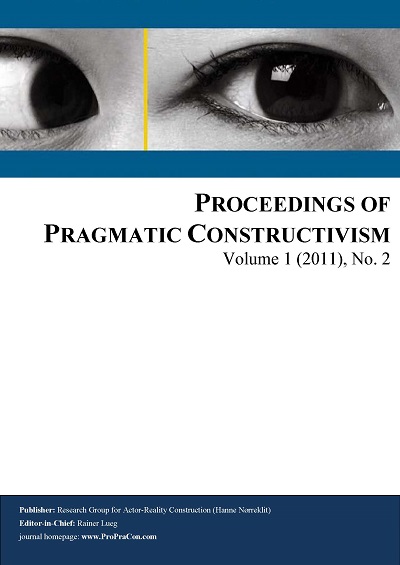Managing individuality: myths versus art
DOI:
https://doi.org/10.7146/propracon.v1i2.16664Keywords:
leadership, reality, symbolic forms, opera, social identity, myth.Abstract
The purpose of this article is to establish the symbolic forms that are presently used in selected mainstream management models and to assess whether the connection between leadership and individual human reality would be improved if the management models were fundamentally inspired by those used by a successful manager and artist.
The theoretical starting point of this article is Cassirer’s (Cassirer 1999) philosophy of symbolic forms. A symbolic form is “a way of having a life world” (own translation) (Cassirer 1999). In a symbolic form, a person discovers and unfolds an ability to build his own universe as an ideal universe which enables the person to “understand and interpret, to articulate and organize, synthesize and universalize his human experience” (Cassirer 1962: 221). Symbolic forms such as art, science, myth and religion thus have common features and structures in their basic function of creating common human existence. When the symbolic form is science, ideals of objectivity and precision in the description of phenomena and their relations dominate man’s formation of his universe. In art, man unfolds an ability to be subjective and create empathetic insight into matters and their diversity (Cassirer 1962). Where science as symbolic form conceptualizes objects, art teaches us empathetic insight. The symbolic forms of art and science perceive a phenomenon differently. For example, science will perhaps see a constellation as a trigonometric function, whereas it may be considered by art as a “Hogarthian shape of beauty” (own translation) (Cassirer 1999: 62). Like the symbolic form of art, the symbolic form of myth builds on emotional sympathy, but differs by believing in the existence of the constellation. It is used to create a natural or magical unity of life. Monotheistic religions also include ideas of striving for a sense of unity, but here the idea is to achieve a universal, ethical sense of unity in an individualized society. Thus the symbolic form of religion helps the individual to choose between right and wrong.
With this in mind, we examine the use of symbolic forms embedded in selected mainstream management models. Subsequently, we study the symbolic forms embedded in the management discourse as the concept is unfolded by the successful Artistic Director of the Royal Danish Opera, Kasper Holten, when he talks about management, with a view to determining the extent to which this practice differs from the symbolic forms embedded in the mainstream management models. The analysis shows that mainstream management models are primarily rooted in the symbolic form of science, although they tend to gradually include the symbolic form of religion or the symbolic form of myth. Generally speaking, the mainstream management models tend to exercise power over the individual’s emphatic insight and autonomous reflection and thereby constrain the scope for human creativity and individuality. Distinctively, Kasper Holten’s management discourse integrates the symbolic forms of art and science. With art as the dominant symbolic form, Kasper rejects new public management’s perception about opera and the management of art while at the same time – through discourses that bind to the individuality of the network of players – forming personal and social identities which come together to realize a world of existential ideas about operas in general as well as opera in particular.
The article is relevant because it provides insight into the ways in which management models, through the use of myth and science as symbolic forms, exercise influence on human existence and interaction and thereby influence the scope for human freedom and exercise of power and also because it provides insight into the features and structures concerning human existence and co-existence from which mainstream management models cut themselves off by not using art as a form of consciousness. The constructive aspect is a parallel outline of features and structures in a new management discourse which are better suited for postmodern society.Downloads
Published
How to Cite
Issue
Section
License
Previous and future use of the work
ProPraCon assumes the non-exclusive rights to publish and store the work of its authors, once they have consented to a publication. Since the rights to publish are non-exclusive, authors are free to re-use their work, e.g., to publish it in other media (as ProPraCon aims at publishing proceedings). Hence, it is explicitly allowed that works submitted to ProPraCon may be published in a somehow similar form in other media. Yet, submitting authors warrant that the work is not an infringement of any existing copyright and will indemnify the publisher against any breach of such warranty.
Permissions
By submitting work to ProPraCon, the authors declare that they have permission to use any content that has not been created by them. Specifically, when using tables, figures or excerpts of more than 400 words, it is expected that the authors…
- …obtain written permission of copyright for the use in print and electronic formats of any of their text, illustrations, graphics, or other material, in their work. This includes any minor adaptations.
- …acknowledge the original source in captions and in the reference list.





